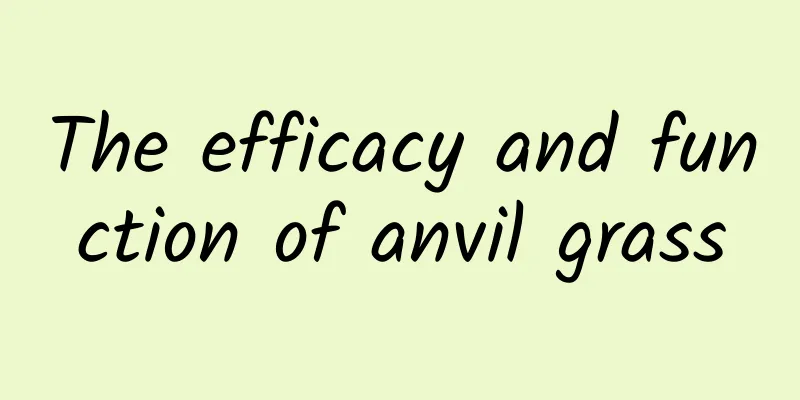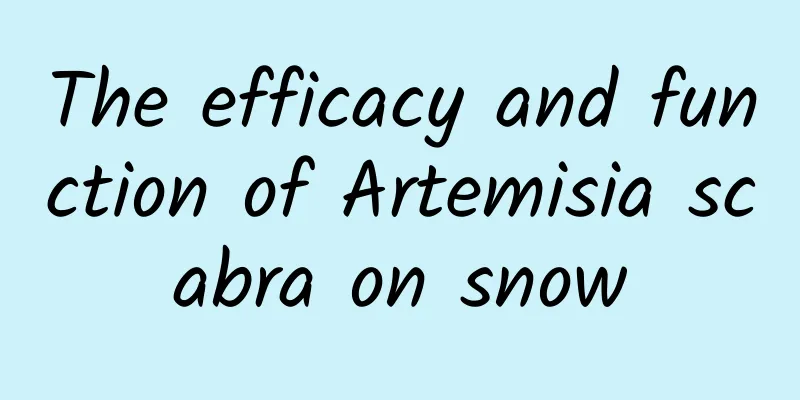The efficacy and function of anvil grass

|
Traditional Chinese medicine is a Chinese tradition. For many Chinese people, seeing a Chinese doctor and taking Chinese medicine when they are sick is their tradition and habit. Therefore, Chinese medicine is liked by many people. Zanthoxylum bungeanum is a common Chinese medicinal material. Let's learn about it together below. [Source] Medicinal material source: the whole herb of northern Lala vine of the Rubiaceae family. [Original form] Northern Lala vine, perennial upright herb, 20-50cm tall. The stem is quadrangular, branched, nearly glabrous or with fine hairs at the nodes. There are 4 leaves in whorls; sessile; the leaf blades are linear-lanceolate, 1-3.5cm long, 2-4mm wide, obtuse at the apex, broadly cuneate or nearly circular at the base, and slightly curled at the edges. There are three basal veins, and the two sides are glabrous except for the edges which are slightly hairy. The inflorescence is terminal, or forms a panicle with leaves at the top of the branches; the flowers are dense, small, yellow-white; the pedicels are 3-5mm long; there are 4 sepals, elliptic-ovate, sparsely hairy, and short and acuminate at the apex; there are 4 stamens, which are alternate with the sepals; the ovary is inferior, nearly spherical, and the style is 2-lobed to near the base. The fruit is spherical, small, black, and densely covered with white hooked hairs. The flowering period is from June to August, and the fruiting period is from July to September. [Habitat distribution] Ecological environment: grows on hillsides, grasslands, and forest edge thickets. [Chemical composition] Contains essential oils, coumarins, flavonoids and anthraquinone compounds. 【Nature and flavor】 Bitter; Cold 【Functions and indications】 Clears away heat and detoxifies; dispels wind and promotes blood circulation. Mainly used for pneumonia cough; nephritis edema; waist and leg pain; amenorrhea in women; dysmenorrhea; leucorrhea; sores and ringworms [Usage and Dosage] For oral use: decoction, 15-30g. For external use: take appropriate amount and mash it for application; or boil it in water for washing. 【Excerpt】 Chinese Materia Medica The above content is an introduction to the effects and functions of the Chinese medicinal herb Anthocereus. I hope it can be of some help to you. The culture of traditional Chinese medicine is profound and extensive. When treating diseases, we need to choose different medicines according to the different diseases to better help the body relieve troubles. |
<<: The efficacy and function of thunder
>>: Effects and functions of Zhejiang Lingzixiang
Recommend
The efficacy and function of large-leaf white lantern
There are so many medicinal herbs in the world, a...
The efficacy and function of the root of stinking grass
Modern medical research believes that the roots o...
A busy city is also a paradise? A forest city that Tao Yuanming could never have imagined!
Let the forest enter the city, and let the city e...
The efficacy and function of tofu skin
In today's society, health preservation seems...
The efficacy and function of fish and turtle Venus
Since Chinese medicine has fewer side effects, mo...
As 2023 is coming to an end, let’s review ten major environmental events!
2023 is coming to an end and the new year is abou...
The efficacy and function of wheat bottle grass seeds
Most Chinese medicinal materials have good effect...
Don’t waste the golden time after getting up in the morning. Get rid of these 4 bad habits and you will be healthier and live longer!
A day's plan begins in the morning. It's ...
The efficacy and function of rat fat
As the pressure of modern life increases, more an...
What should I avoid when taking warming and nourishing Chinese medicine?
When we take warm tonic Chinese medicine, we must...
Tens of thousands of conches are needed to extract 1 gram of this dye, which is the color of the rich and powerful.
Today we will talk about a dye that was once glor...
The efficacy and function of chicken gizzard grass
The environment is now seriously deteriorating an...
Using "disposable shower cap" to cover dishes, is this kind of plastic wrap really usable?
In our home life, we use plastic wrap almost ever...
The efficacy and function of sow vegetable
Sow vegetable is one of the common traditional Ch...
Garlic oil soft capsule
Medicines are very common. There are many types o...









